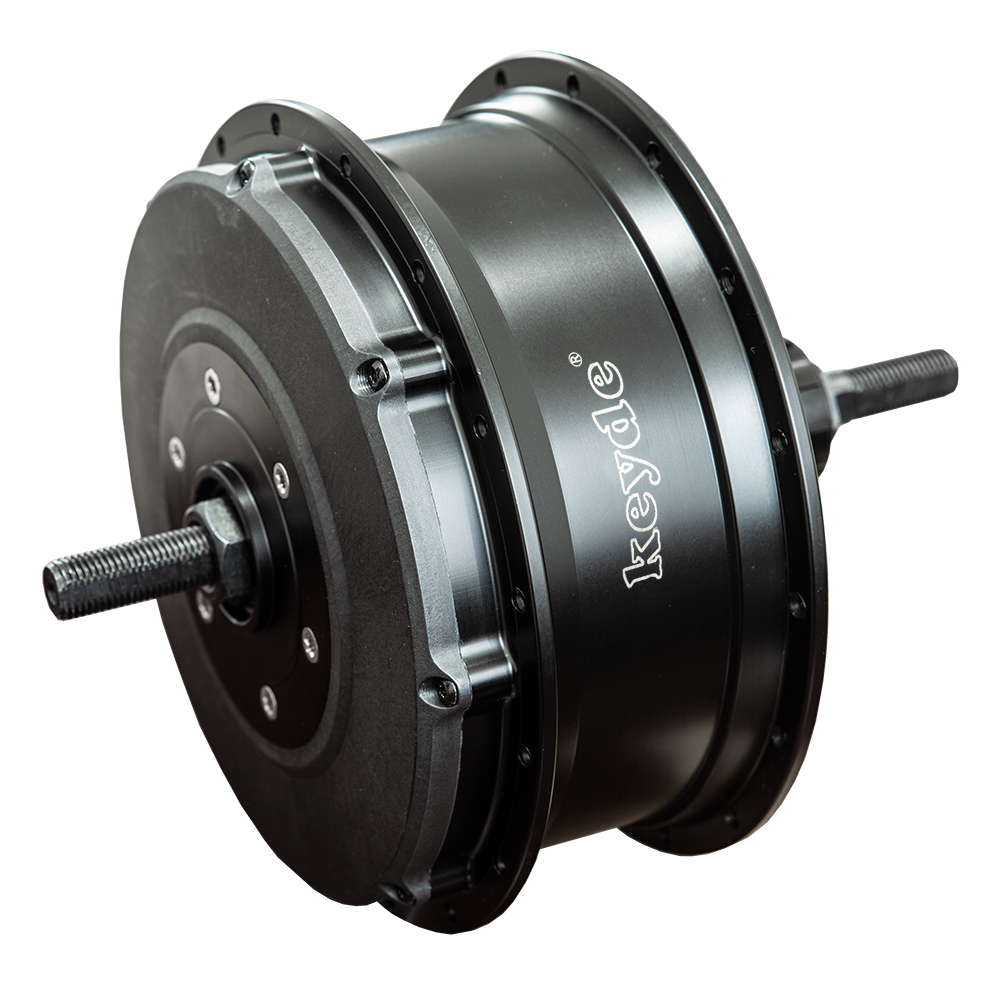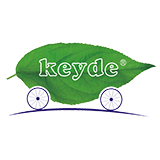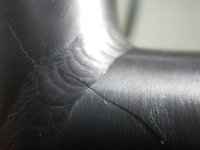I've been toying with the idea of trying to build a 20-lb or less carbon fiber 700c single-speed e-bike, using the same Keyde P160 All-In-One hub I have on my steel single-speed. To tension the chain without a rear derailleur or tensioner, I want to use a Wheels MFG eccentric bottom bracket. They work with BB30 or PF30. I'd really like to use disc brakes, but since the hub isn't compatible with thru-axles, I have to find a disc frame that uses QR.
Pretty uncommon these days but I found:
This is an embed external element. It can be deleted using the delete key or the backspace key. To view the full element, press the preview button below.
NOTE: STRIPPED THREADS IN CRANKS AND PEDALS ARE DUE TO THOSE COMPONENTS NOT BEING PROPERLY TIGHTENED. STRIPPED THREADS DUE TO IMPROPER ASSEMBLY / MAINTENANCE ARE NOT COVERED BY WARRANTY. Fork Weight: 520g.
and
This is an embed external element. It can be deleted using the delete key or the backspace key. To view the full element, press the preview button below.
100% Toray Carbon Fiber. EN and CN Certification. Normal Weight:960g-1100g. New Arrival. Before sending item,we will check all again and again,to confirm it's perfect to be sent. All prices are Ex-Factory.
Next challenge is tire width. The Mallorca frame can fit up to 700x28, while the other is limited to 700x25. I'd like to go a lot wider but I have not been able to find a carbon gravel frame that has discs and QR dropouts. There are 29er frames that meet all the requirements, like this one:
This is an embed external element. It can be deleted using the delete key or the backspace key. To view the full element, press the preview button below.
1>Material:Toray T1100 carbon fiber. 2>Carbon Weave:UD. 7>Weight:960g(L Size).
I don't love look of the 29ers, but all-around it might be a better choice if I want wide tires. Most of the frames weigh around 1kg, and the hub weighs 4kg. That's about 11 pounds so far. That means I have 9 pounds left for the rims, spokes, cranks, cockpit, chain, and saddle.
I want to lace the hub to carbon rims to keep the weight down and run the tires tubeless. I haven't been able to find much written on the web about combining hub motors with carbon rims, but did see one or two folks that did it.
what do y'all think? Is it possible to keep this to 20 pounds based on what i've specc'ed so far?
Pretty uncommon these days but I found:
This is an embed external element. It can be deleted using the delete key or the backspace key. To view the full element, press the preview button below.

Framed Mallorca Carbon Disc Brake 54cm 700c Black Road Bike Frame / Fork New | eBay
https://www.ebay.com/itm/335391512101NOTE: STRIPPED THREADS IN CRANKS AND PEDALS ARE DUE TO THOSE COMPONENTS NOT BEING PROPERLY TIGHTENED. STRIPPED THREADS DUE TO IMPROPER ASSEMBLY / MAINTENANCE ARE NOT COVERED BY WARRANTY. Fork Weight: 520g.
and
This is an embed external element. It can be deleted using the delete key or the backspace key. To view the full element, press the preview button below.

New all carbon fiber internal cable road bike racing frame disc brake opening | eBay
https://www.ebay.com/itm/204005767944100% Toray Carbon Fiber. EN and CN Certification. Normal Weight:960g-1100g. New Arrival. Before sending item,we will check all again and again,to confirm it's perfect to be sent. All prices are Ex-Factory.
Next challenge is tire width. The Mallorca frame can fit up to 700x28, while the other is limited to 700x25. I'd like to go a lot wider but I have not been able to find a carbon gravel frame that has discs and QR dropouts. There are 29er frames that meet all the requirements, like this one:
This is an embed external element. It can be deleted using the delete key or the backspace key. To view the full element, press the preview button below.

AIRWOLF MTB Carbon Frame 29er Boost Bike Bicycle Frameset 148mm Ultralight 960g | eBay
https://www.ebay.com/itm/2043771784331>Material:Toray T1100 carbon fiber. 2>Carbon Weave:UD. 7>Weight:960g(L Size).
I don't love look of the 29ers, but all-around it might be a better choice if I want wide tires. Most of the frames weigh around 1kg, and the hub weighs 4kg. That's about 11 pounds so far. That means I have 9 pounds left for the rims, spokes, cranks, cockpit, chain, and saddle.
I want to lace the hub to carbon rims to keep the weight down and run the tires tubeless. I haven't been able to find much written on the web about combining hub motors with carbon rims, but did see one or two folks that did it.
what do y'all think? Is it possible to keep this to 20 pounds based on what i've specc'ed so far?











